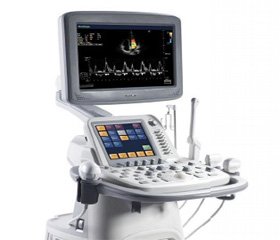Международный неврологический журнал 4 (66) 2014
Вернуться к номеру
Clinical and diagnostic value of doppler ultrasound in hemorrhages into posterior cranial fossa
Авторы: Goncharuk O.M. - National Medical Academy of Postgraduate Education named after P.L. Shupyk, Kyiv, Ukraine
Рубрики: Неврология
Разделы: Справочник специалиста
Версия для печати
Doppler ultrasound, transcranial Doppler, hemorrhage, vascular malformation, screening, arteries.
The work is based on an analysis of the survey 66 patients with bleeding in posterior cranial fossa. Patients were in the examination and treatment in clinical neurosurgery Kyiv city emergency hospital. Patients held Computer tomography (CT), magnetic resonance imaging (MRI), MRA, cerebral angiography. Ultrasonography and transcranial Doppler was a complex examination of patients with bleeding in the structure posterior cranial fossa. Doppler characteristics of vascular spasm of complications of arterial aneurysm rupture basin was of great importance as a non-invasive method, which allowed to track the dynamics of cerebral blood flow velocity.
Comparison of the clinical picture in patients after subarachnoid hemorrhage data in intracranial arteries showed that the presence of velocities within 120–140 cm/s was not accompanied by the dire state of the patient and the development of cerebral infarction.
Speeds of more than 200 cm/s accompanied by severe clinical condition.
In some patients with a tendency to develop cerebral infarction is increasing ran symptoms, which, in obvious depended on the good development of collateral circulation and autoregulation status of the affected area. In such cases, data were crucial and valuable in dynamic observation of patients with this difficult but asymptomatic vasospasm.
The main feature of cerebral vasospasm doppler that occurs 2–3 days is increasing speeds to 120 cm/s (at angiogram spastic changes begin to differentiate only at speeds of 120 cm/s and above).
Comparison between the velocity of blood flow and the development of the clinical picture ischemia suggests that l symptoms or increase — this allows you to use the value of blood speeds as a psymptomatic vasospasm increase in blood flow occurs before the onset of clinicarognostic indicator.
The study of variants of vasospasm, predictability caused his cerebral ischemia and depending on the results of surgical treatment of anevrism and malformations rupture in acute subarahnoidal hemorrage on the basic analysis of the dynamics of the linear velocity of blood flow in the arteries in 66 patients. Comparison of computed tomographic and clinical-neurological manifestations of cerebral ischemia resulting from vasospasm with doppler dynamics. All patients performed consistently transcranial Doppler examination.
Doppler Past research has shown that the development of the vasospasm and caused him cerebral ischemia occurs later than three days after the hemorrhage of blood speed increase to 6–12 days. The average flow velocity at the same time usually does not exceed 120 cm/s in the first three days and greater than 120 cm/s at a later date. Past studies showed no significant increase in blood flow velocity before 72 hours after subarahnoidal hemorrage. Transcranial Doppler is especially valuable for patients admitted to periods longer than 72 hours after subarahnoidal hemorrage, because they cerebrovascular hemodynamics can already begin, but do not cause clini.

